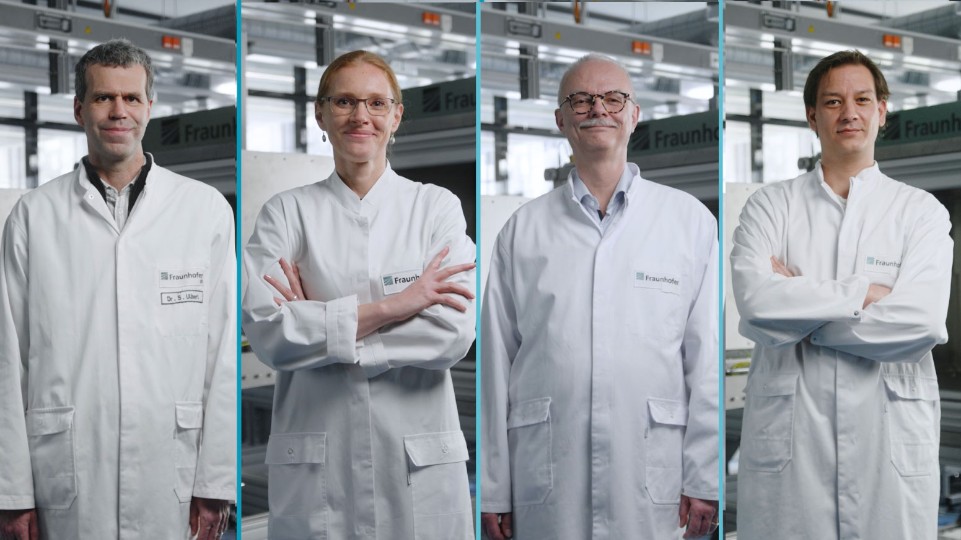Vaccine production: Inactivating pathogens using low-energy electrons

Privacy warning
With the click on the play button an external video from www.youtube.com is loaded and started. Your data is possible transferred and stored to third party. Do not start the video if you disagree. Find more about the youtube privacy statement under the following link: https://policies.google.com/privacyAwarded the Joseph von Fraunhofer Prize for developing a vaccine production process that is fast-er, more efficient and more environmentally friendly: Dr. Sebastian Ulbert, Dr. Jasmin Fertey, Frank-Holm Rögner and Martin Thoma (from left to right).
Winners of the Fraunhofer Prize for “Human- and Environment-Centered Technology”
Dr. Sebastian Ulbert and Dr. Jasmin Fertey (Fraunhofer Institute for Cell Therapy and Immunology IZI)
Frank-Holm Rögner (Fraunhofer Institute for Organic Electronics, Electron Beam and Plasma Technology FEP)
Martin Thoma (Fraunhofer Institute for Manufacturing Engineering and Automation IPA)
Vaccine production: Inactivating pathogens using low-energy electrons
Vaccines are currently a great source of hope for many people, as it is believed they will help to protect society against COVID-19 and pave the way back to a normal life. The current focus is clearly on coronavirus — but vaccines are also fundamental to combating other pathogens. A team of researchers from three Fraunhofer Institutes has now developed a method of producing vaccines that is faster, more efficient and more environmentally friendly than the conventional production process.
The methods available to produce vaccines have been known for decades. But a new production process for inactivated vaccines is set to make vaccine production faster, more environmentally friendly and more efficient than ever before while also reducing costs. Dr. Sebastian Ulbert and Dr. Jasmin Fertey from the Fraunhofer Institute for Cell Therapy and Immunology IZI in Leipzig, Frank-Holm Rögner from the Fraunhofer Institute for Organic Electronics, Electron Beam and Plasma Technology FEP in Dresden, and Martin Thoma from the Fraunhofer Institute for Manufacturing Engineering and Automation IPA in Stuttgart have been awarded the 2021 Fraunhofer Prize for “Human- and Environment-Centered Technology” on behalf of their teams. The jury emphasized “the simple and efficient method for largely retaining the structures that are important to the efficacy of the vaccine and the complete avoidance of chemical additives that would otherwise be necessary.”